Kaloko-Honokohau National Historical Park, Big Island, Hawaii
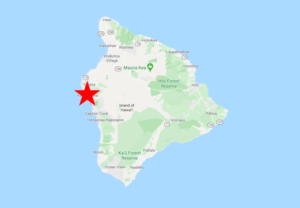
The coastal zone between Kailua-Kona and its airport contains the Big Island’s two most productive waterbird sites, Aimakapa Pond and the Kealakehe Wastewater Treatment Plant, and one of its best seawatching sites, Keahole Point. Hawaiian Coot and “Hawaiian Stilt” breed locally, and migratory waterfowl and shorebirds are seasonally numerous and diverse, often including vagrants from both sides of the Pacific. Exotic landbirds of interest include Black and Gray Francolins and Red-masked Parakeet. Seabirds seen regularly from shore include “Hawaiian Storm-Petrel”, Bulwer’s Petrel, and Masked Booby, in addition to commoner species.
Orientation
Directions
Kaloko-Honokohau National Historical Park is on the western coast of the Big Island between Kona International Airport and Kailua-Kona.
The park entrance is along Highway 19 four miles south of the airport, or three miles north of Kailua-Kona.
Birdfinding
In the span of about six miles, the Kaloko-Honokohau area offers three significant hotspots for birdwatchers: Aimakapa Pond (inside Kaloko-Honokohau National Historical Park), the Kealakehe Wastewater Treatment Plant (south of the park), and Keahole Point (north of the park).
Aimakapa Pond. There are two ways to get to Aimakapa Pond, both requiring a hike of at least a half-mile each way. Many tourists prefer to park at the Hale Ho’okipa visitor center and hike to the pond via the main interpretive trail, which features a set of prehistoric (i.e., early Polynesian) petroglyphs. A more direct approach is to park in the lot on the north side of Honokohau Marina and hike the very short distance to the beach, then north to the pond.
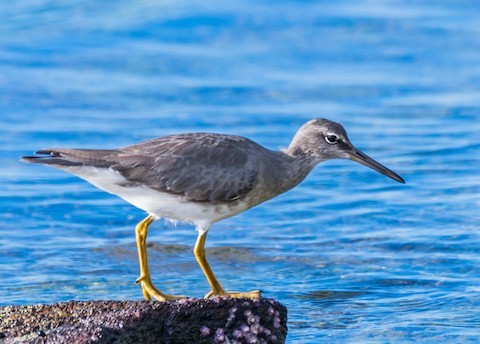
Wandering Tattler at Aimakapa Pond. © Jim Merritt
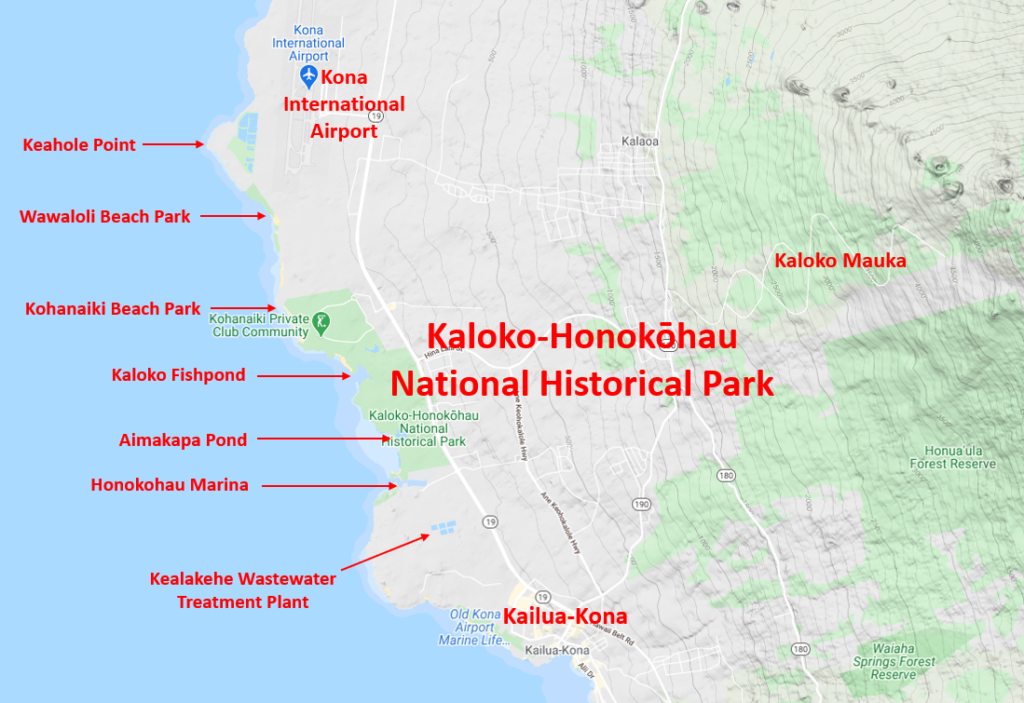
In addition to the resident population of Hawaiian Coot, a few waterfowl species winter regularly at Aimakapa Pond: mainly Northern Shoveler, Ring-necked Duck, and Lesser Scaup. Waterfowl that are less consistently present, and usually in smaller numbers include Brant, Hawaiian Goose, Eurasian and American Wigeons, Mallard, Northern Pintail, Blue-winged and Green-winged Teal, Greater Scaup, and Bufflehead. Pied-billed Grebes were known to breed at the site for many years, but that small population died out. Vagrant waterfowl have included Snow, Cackling, and Canada Geese, Garganey, Cinnamon Teal, Gadwall, Canvasback, Tufted Duck, and Red-breasted Merganser.
The common shorebirds of Aimakapa Pond are “Hawaiian Stilt”, Pacific Golden-Plover, Ruddy Turnstone, Sanderling, and Wandering Tattler. Uncommon but regular shorebirds include Black-bellied and Semipalmated Plovers, Dunlin, Sharp-tailed, Pectoral, and Spotted Sandpipers. Vagrants have included Whimbrel, Red Knot, Ruff, Least and Western Sandpipers, Red-necked Stint, Wilson’s Phalarope, Gray-tailed Tattler, Lesser and Greater Yellowlegs, and Long-billed Dowitcher.

“Hawaiian Stilt” at Aimakapa Pond. © Lydia Scheeren
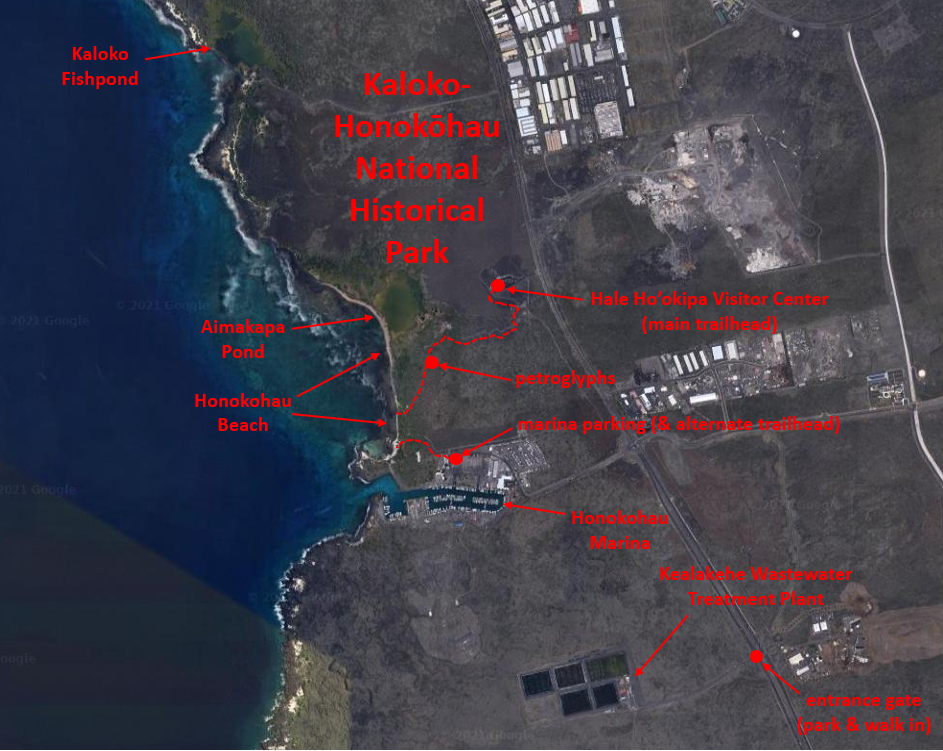
Laughing Gull occurs regularly during the winter months and occasionally at other seasons. Other larids that have occurred once or more include Common Fairy-Tern, Least, Black, and Elegant Terns, and Bonaparte’s, Franklin’s, Ring-billed Gull, American Herring, Slaty-backed, and Glaucous-winged Gulls.
White-faced Ibis has been seen sporadically at Aimakapa Pond since the 1990s, but is not to be expected. Black-crowned Night-Heron and Western Cattle Egret are more consistently present, but usually in small numbers.
The brushy and areas along the trail and around Aimakapa Pond often produce introduced landbirds. Common species include Gray Francolin, Common Waxbill, African Silverbill, Scaly-breasted Munia, Yellow-fronted Canary, Yellow-billed Cardinal, and Saffron Finch. Less common but possible are Black Francolin, Kalij Pheasant, Red-masked Parakeet, Lavender Waxbill, Red Avadavat, and Java Sparrow.
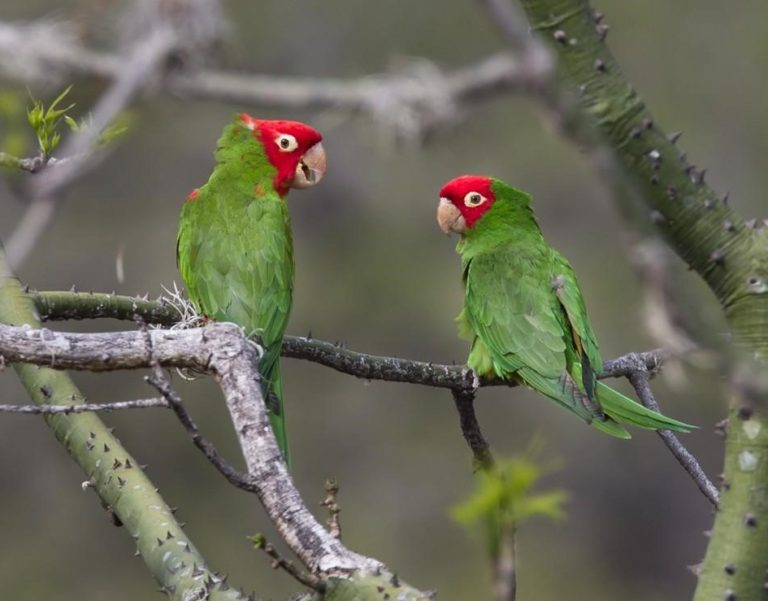
Red-masked Parakeet is becoming established along the Kona coast. © Lars Petersson
At the northern end of the park is a second pond, called the Kaloko Fishpond (an ironically redundant name, as “kaloko” means “fishpond”), which is more of a bay, pure saltwater. This site generally offers far lower bird diversity than Aimakapa Pond, so for birds it is not worth the hike, but it is a scenic spot for a picnic lunch.
Kealakehe Wastewater Treatment Plant. Just half a mile south of Honokohau Marina, the Kona sewage ponds at Kealakehe are one of Hawaii’s best locations for shorebirds, gulls, and terns, and make an excellent complement to Aimakapa Pond. Hawaiian Coot, “Hawaiian Stilt”, and Wandering Tattler are present year-round, and Least Tern has bred (up to three pairs) most years since 2010.
Kealakehe is among the state’s most consistent locations for several species, including White-faced Ibis, Sharp-tailed Sandpiper (October-November), Pectoral Sandpiper (August-November), Laughing Gull (December-April), Franklin’s Gull (April-May), and Ring-billed Gull (December).
The site’s impressive list of vagrants includes Tufted Duck, Long-tailed Duck, Hudsonian Godwit, Ruff, Stilt Sandpiper, Curlew Sandpiper, Spotted Redshank, Marsh Sandpiper, and Black, Common, and Arctic Terns.
In addition to the Gray Francolin, which is common throughout the Kona region, the less common Black Francolin can often be found at Kealakehe.
To visit the ponds, you must park outside the entrance gate along Highway 19 and walk the half-mile access road. There is a fence around the ponds, so visitors are limited to viewing from this perimeter.
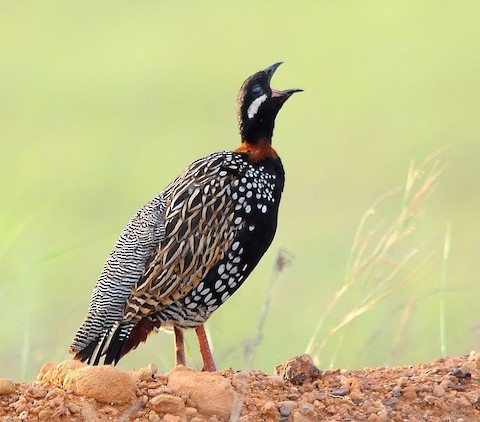
Black Francolin is locally common around Kealakehe Wastewater Treatment Plant. © Jaysukh Parekh Suman
Keahole Point. In Hawaii, most seawatch points become interesting in the late afternoon, when tubenoses are most likely to approach land. Consequently, few Hawaiian seawatch points face west—into the setting sun. Keahole Point faces west, but is nonetheless among the state’s more interesting promontories for seawatching. This is due in part to the contours of the seabed offshore, as there is a steep subsea cliff about 200 m offshore. As with most seawatches, the birds are often too distant to see clearly, and a strong spotting scope is at least preferable, if not essential.
It is one the few shoreside sites where “Hawaiian Storm-Petrel” and Bulwer’s Petrel are seen regularly—the latter is seen consistently from April to August and former somewhat less consistently between June and September. It is also one of the best sites in Hawaii for Masked Booby, which apparently occurs year-round but is seen most often between June and October.

Bulwer’s Petrel is seen regularly from shore at Keahole Point. © Olli Tenovuo
Other species seen regularly at Keahole Point include: Wedge-tailed Shearwater (March-November), Sooty Shearwater (April and September), Great Frigatebird (June-September), Brown Booby (year-round), and “Hawaiian Noddy” (year-round).
Species seen sporadically or exceptionally have included: Yellow-billed and Red-tailed Tropicbirds, Laysan and Black-footed Albatrosses, Juan Fernández and Hawaiian Petrels, Buller’s and Christmas Shearwaters, Red-footed Booby, and Sooty Tern.
To reach Keahole Point, take Makako Bay Drive west from Highway 19—the first turn south of the airport—and follow it to its end, passing Wawaloli Beach Park, and arriving at a short lane to the left. Park along this lane, Ha’uke’uke Way, and follow it to the shore, then turn right and walk another five minutes to Keahole Point.
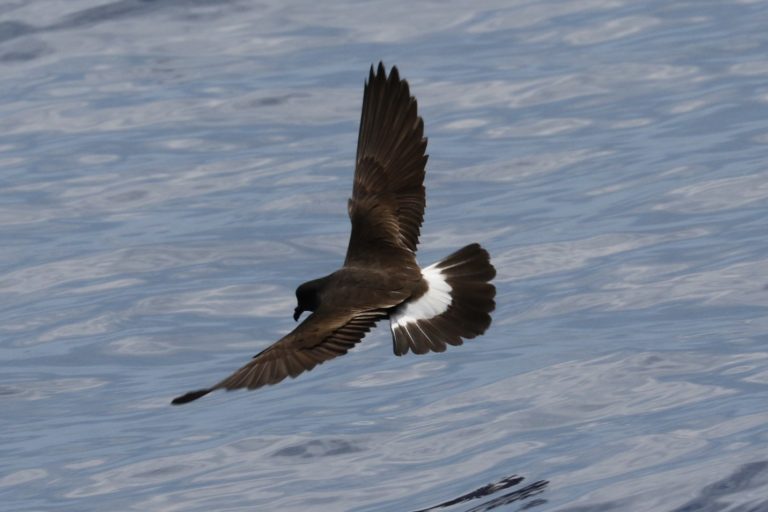
“Hawaiian Storm-Petrel” can sometimes be seen from shore at Keahole Point. © Annie B. Douglas / Cascadia Research Collective
Services
Accommodations
The Kona coast has no shortage of accommodations. There are several hotels in Kailua-Kona itself and larger resorts north of the airport.
Notes
When to Visit
Aimakapa Pond and Kealakehe Wastewater Treatment Plant can be productive at any time of year, with some unusual migrants and vagrants possible at any season.
Diversity at Keahole Point is highest between April and September. Due to its position on the western coast, the lighting is best in the early morning, but interesting sightings can occur at any time of day.
Hazards & Hassles
Rough Walking. The trails of Kaloko-Honokohau include many patches of extremely jagged lava. Sturdy hiking boots with ankle support are strongly recommended.
Links